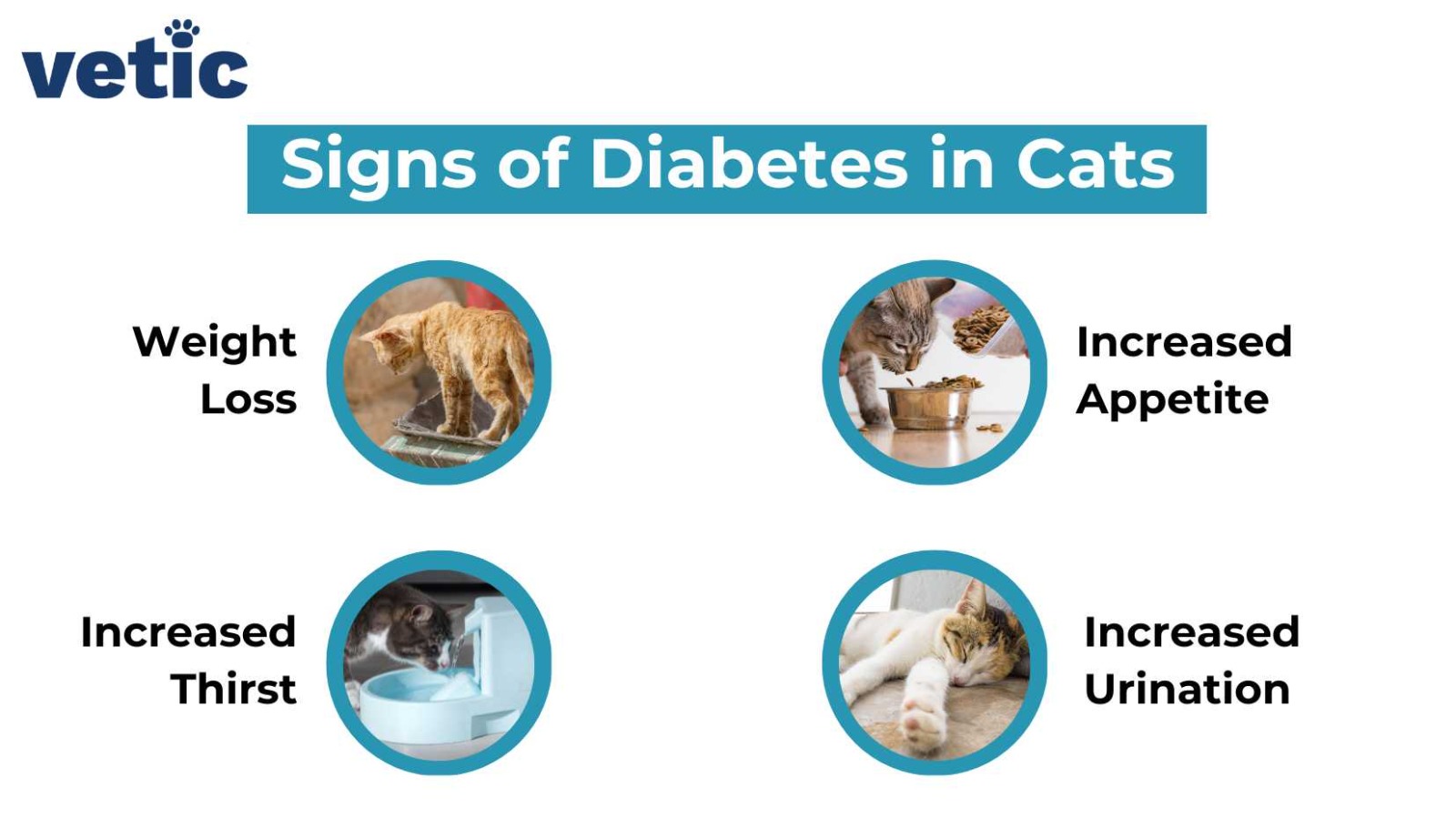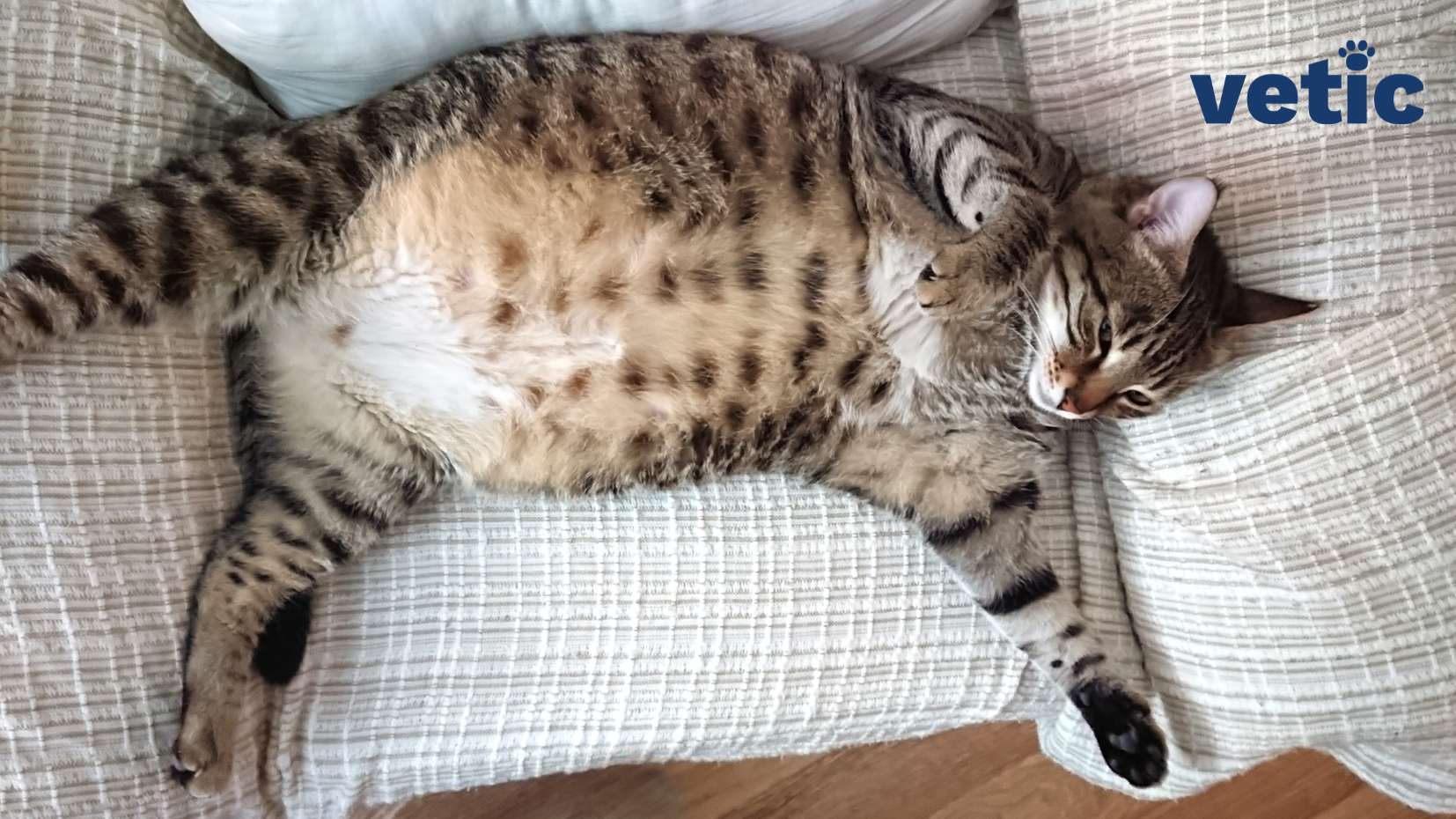Diabetes in cats is a chronic illness. It is caused due to insufficient insulin secretion or insulin resistance. It causes high blood glucose levels in cats.
Type II diabetes is the most common form of diabetes in cats. As many as 1% of all cats may have diabetes.
It is a rather common hormonal disorder in the entire cat population. It is easily treatable when diagnosed early. If you notice any of the following signs of diabetes in cats, you need to contact the nearest veterinary expert on endocrinology.
What are Signs of Diabetes in Cats?

The four main signs of diabetes in cats are –
- Increased thirst
- Weight loss
- Increased appetite
- Increased urination
If you see your cat losing weight despite having a healthy appetite, speak to your veterinarian. Your cat might need a few additional tests to determine their blood glucose levels.
Types of Diabetes in Cats
Type II Diabetes
Type II is the most common type of diabetes in cats. It accounts for 90% of all cases across the globe. Here’s what defines Type II Diabetes in cats –
- Insulin Resistance – The body doesn’t respond to insulin.
- Insulin Deficiency in Cats – The pancreas doesn’t produce enough insulin.
- Obesity – Overweight and obese cats are more prone to Type II diabetes.
Type I Diabetes
The next most common type of diabetes is Type I. It is usually an autoimmune form of diabetes. In this disorder, the body’s immune cells attack and destroy the pancreatic cells that produce insulin. The cells of the pancreas that produce and secrete insulin are nearly all destroyed.
The treatment of diabetes will depend upon the type as well as the cause of the hormonal disorder.
What Causes Diabetes in Cats?

Diabetes in cats is caused by the failure of the pancreas to secrete enough insulin that regulates blood sugar.
Genetics and other co-occurring disorders do play significant roles in the development of diabetes in cats. However, here are some risk factors for diabetes in cats –
- Old age
- Physical inactivity
- Obesity
- Male gender
- Prolonged use of steroids
Nonetheless, a female cat can also get diabetes irrespective of their breed and neutering status.
Once your cat reaches around 7 years of age, an annual check-up of their fasting glucose levels is recommended by expert veterinarians.
What is the Treatment of Diabetes in Cats?
Diabetes in cats can be treated although the treatment of diabetes in cats is long-term.
The first step includes the removal of the predisposing factors such as steroids that may have been prescribed for asthma or severe allergies.
Another step is to reduce a cat’s weight if they are overweight. Refer to our post on obesity in cats to find out if your cat is within the correct weight range.
Removal of high-starch, commercial food from your cat’s diet. At the same time, your veterinarian will recommend special, easy-to-digest, low carbohydrate, prescription food for your cat. You will have to monitor your cat’s daily dietary intake to control their weight.
Depending on the treatment facilities and medications available in your area, your veterinarian may recommend insulin injections for your cat. In the first few days, your vet will administer the insulin, note the dose and resulting drop in blood glucose levels.
Treatment of diabetes in cats in a long-term commitment. Along with controlled diet and insulin injections, your cat will also receive supportive treatment for their liver and kidney health, and other co-existing disorders.
Never increase the dose of the medication or stop the supportive meds without consulting your veterinarian.
How Long do Cats Live with Diabetes?
Cats who have been diagnosed with diabetes in the early stages can live a normally expected lifespan.
It is very difficult to predict the life expectancy of a cat with diabetes since a number of comorbidities are often associated with the hormonal disorder.
Sadly, in a few studies in the UK, veterinarians report a shortened lifespan of around 3 years after a diabetes diagnosis.
